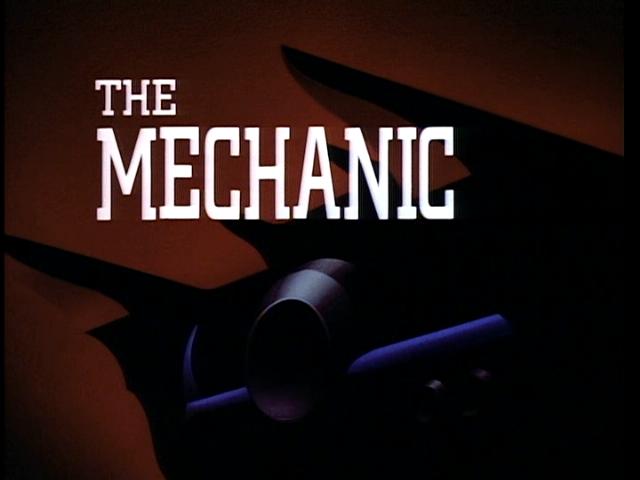“The Mechanic”
Story by Steve Perry, Laren Bright
Teleplay by Randy Rogel
Directed by Kevin Altieri
Episode #055
Music Composed by John Tatgenhorst, Peter Tomashek
Animation by Dong Yang Animation Co., LTD.
Original Airdate—January 24th, 1993
Plot: Earl Cooper is the man who made and maintains the Batmobile. When the Penguin tracks him down, he uses the mechanic to set a trap for Batman and Robin
“The Mechanic” is an episode that is somehow better than the sum of its parts, sort of the opposite of “Mudslide.” On paper, the episode shouldn’t work, but it’s actually a lot of fun.
The major obstacle is that “where does he get those wonderful toys” is not a question that needs to be answered. Sure, maybe it adds to the “realism,” but realism isn’t an asset here. Realistically, you’d have to acknowledge that a giant atomic powered Dark Deco future phallus is an incredibly impractical way for Batman to get around Gotham either quickly or quietly. And then, answers to the question are either boring or absurd. Or both. In the ‘90s, the Batmobile was maintained by a mute dwarf who lived in the Batcave. Unless there’s a really good story to tell, a writer can just leave it at “Batman has a super awesome car” and “he fixes it himself.”

It’s a good thing there is a good story here, or at least a good character. Earl Cooper is another reflection of Batman, but this time of his best qualities: Earl is brave, clever, and he risks his own physical and financial security in order to save thousands of lives. The extended second act flashback that explains who he is and how he came to be works for all the reasons the similar flashback didn’t work in “Moon of the Wolf”: here it’s a story about a man we like being told to someone who doesn’t already know what happened.
The great Paul Winfield gives Earl what can only be described as “folksy charm.” Teaming up with his daughter in a working class garage to make superhero gear possibly inspired the creation of “Steel” John Henry Irons and his niece Natasha, and almost certainly inspired Christopher Nolan to cast Morgan Freeman as Lucius Fox and turn him into Batman’s Q.
(Speaking of Q, er, sort of, John de Lancie plays Eagleton, one of the Penguin’s bird named flunkies.)
This is also another great Penguin episode. As with “I’ve Got Batman in My Basement,” almost any Batman villain could have worked, but Paul Williams brings such gusto to his performance that it’s hard to imagine any other villain having as much fun. (Yes, even the Joker.) He doesn’t just bust into Earl’s garage, he BLASTS his way in. His ice cold reading of “on a sea cruise” as he flushes Arnold Rundle, the accountant who found Earl, to his death on a ducky boat is perfect supervillainy, and bravo, Penguin, on being the first supervillain to kill someone other than themselves.
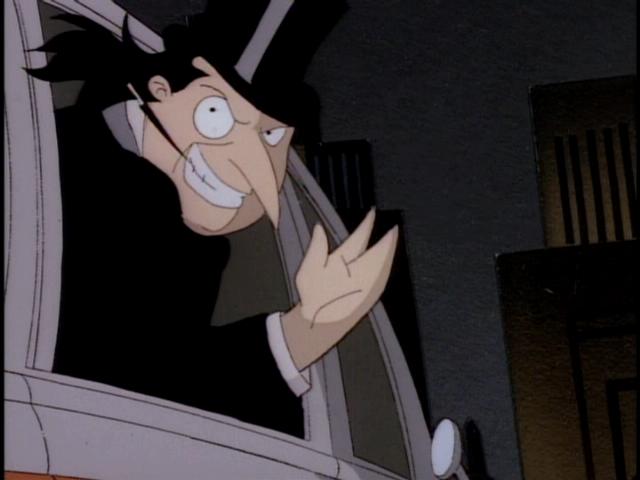
The Penguin’s cackling, hurts to breathe laughter as he drives a helpless Batman and Robin around town and (he thinks) to their eventual doom solves a plot problem. When I first watched “The Mechanic” when I was 13 years old (and yes, you can do the math on how old I am), I thought then that the Penguin should have just immediately blown up the Dynamic Duo. But, then, he “should” have just shot poor Arnold Rundle in the head, instead of writing him a check for $400,000 then flushing him away on a giant ducky boat. The Penguin doesn’t do what he “should” do. The Penguin is a supervillain, and if he can’t kill in the most dramatic way possible (see: riding a firebreating dragon at an opera) he doesn’t do it at all.
(Though maybe the Penguin could have placed a tracer on the Batmobile to figure out who Batman is, if he hasn’t already. After all, the Penguin already suspects Batman suffered some crime related trauma, Earl confirms that Batman is rich (or at least has wealthy “um, backers”) and the Penguin’s met Bruce Wayne face to face.)
Besides the two Pauls that hold up most of the episode, the writers and director Kevin Altieri (who does his usual masterful job) fill the episode with so many little details that make “The Mechanic” fun from beginning to end. There’s the introduction of the Penguin-Limousine, the Penguin’s (poor) attempt to keep up with Batman. There’s Batman actually bantering with Robin, Earl, and Earl’s daughter. There’s a cameo by the Golden Age Batmobile in the flashback. There’s the car crash that takes the roof off the Penguin-mobile and the top off the Penguin’s hat. And of course there’s the vanity plate the Penguin has to polish while he’s in jail.
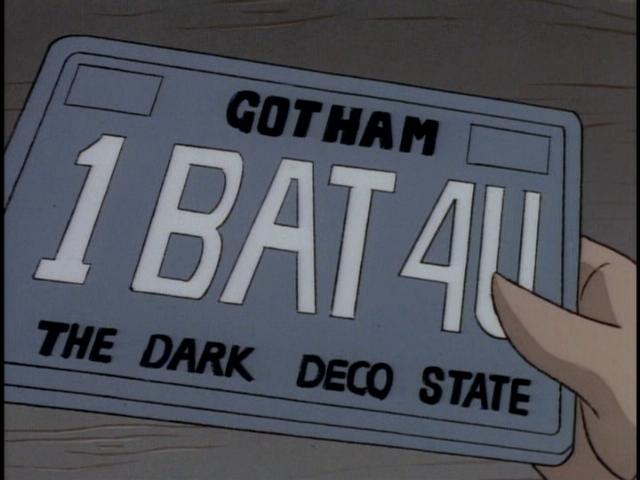
Honestly, the worst part of the episode is Earl’s vague warning to Batman before the Penguin springs his trap. Earl’s tone could not more obviously convey the fact that he’s speaking in code, yet neither Batman nor the Penguin’s thug can figure that out. Batman also engages in some old-school, Batman ‘66 style over-explaining what Earl was trying to tell him rather than just hitting the eject button and telling Robin what happened later. Earl also promises to build an all new, even better Batmobile, and as I’m not that big a fan of the Anton Furst design for the Tim Burton movies, I’d have loved to see what Timm and company would have designed for this show. But in the next episode, the Batmobile looks exactly the same.
Speaking of…
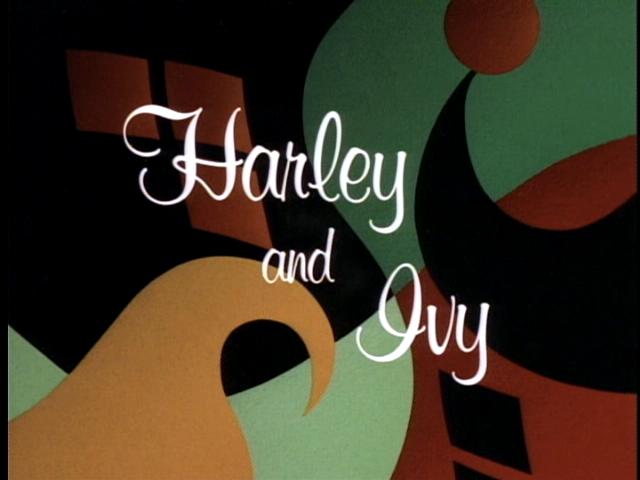
“Harley and Ivy”
Written by Paul Dini
Directed by Boyd Kirkland
Episode #056
Music Composed by Shirley Walker
Animation by Dong Yang Animation Co., LTD.
Original Airdate—February 2nd, 1993
Plot: When the Joker kicks out Harley, she teams up with Poison Ivy to become a two woman crime wave. But a jealous Joker wants Harley back… for revenge.
Oh man, this episode. Oh man oh man. Where to start?
Let’s start with Harley Quinn. Paul Dini created Harley for “Joker’s Favor” as a more visually interesting member of Joker’s gang, partly inspired by Judy Holiday and partly by Dini’s friend and Harley’s voice actress, Arleen Sorkin. In her next appearance, however, Harley took her definitive place as the Joker’s abused girlfriend. And that’s where most of my problems with the character lie.
As much as Poison Ivy represents weaponized sexuality, Harley Quinn is weaponized victimhood. Personified Stockholm Syndrome. I know a lot of people find Harley Quinn to be an empowering character, especially Harley in this episode. But she’s a character who is defined first and foremost by her fatal flaw, her obsessive love for her abuser. Even when she briefly moves away from the Joker, she just transfers that love to a different charismatic psychopath.
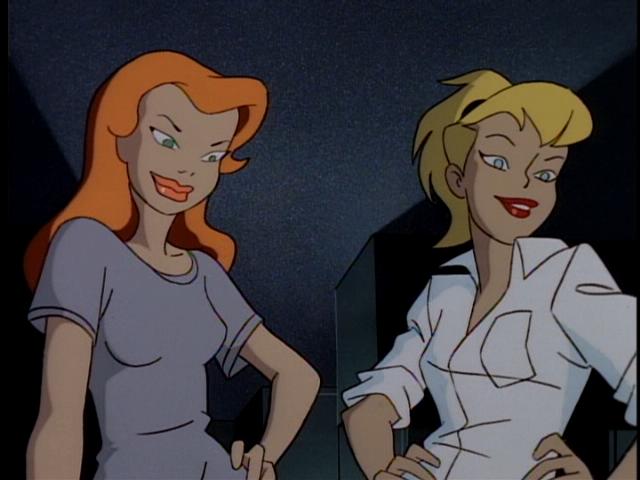
And whether or not Harley has entered into a romantic relationship with Poison Ivy—certainly the image of the two hanging out pantsless is the screencap that launched a thousand ‘ships—Poison Ivy explicitly takes the Joker’s place in Harley’s life. Harley is still driving someone else’s car, Ivy’s hot pink Cadillac “Rose Bud” instead of a Jokermobile, and still playing sidekick to someone else’s crime, but at least Ivy high fives Harley’s successes, encourages her to branch out, and even does her share of the housework, creating a happy domestic life in Toxic Acres (complete with the world’s best refrigerator collection). And together they pull off more successful crimes.
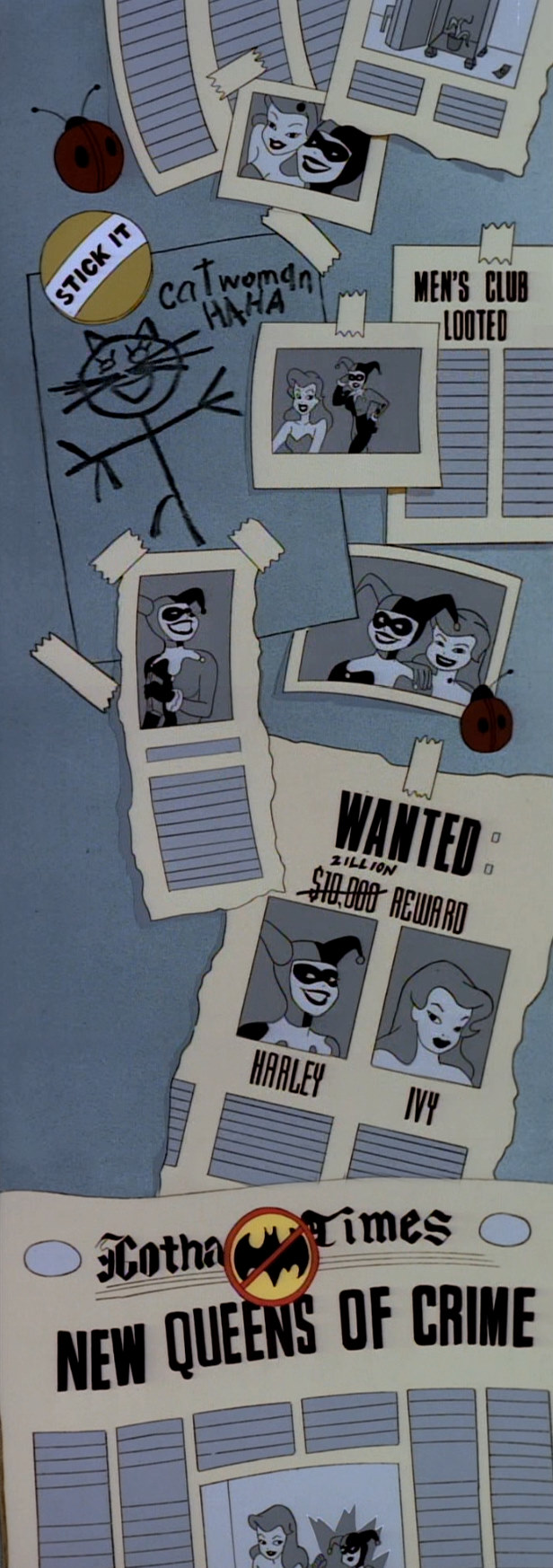 But let’s face it, Poison Ivy is only a better partner in crime for Harley in comparison to the Joker, who is the worst person in the world. She’s a still a homicidal maniac who uses Harley as a stooge and emotional support. In the end, even she abuses Harley by throwing mud in her eye. Yes, “Harley and Ivy” adds feminism to environmentalism as an excuse for Poison Ivy’s crimes, and suggests she does sometimes care about some people, but she’s still a monster, most of the time.
But let’s face it, Poison Ivy is only a better partner in crime for Harley in comparison to the Joker, who is the worst person in the world. She’s a still a homicidal maniac who uses Harley as a stooge and emotional support. In the end, even she abuses Harley by throwing mud in her eye. Yes, “Harley and Ivy” adds feminism to environmentalism as an excuse for Poison Ivy’s crimes, and suggests she does sometimes care about some people, but she’s still a monster, most of the time.
That said, for all her flaws as a person, Harley is clearly the best character to come out of Batman: the Animated Series and this episode alone would be enough reason why. For one thing, “Harley and Ivy” is a laugh riot from beginning to end, even premised on the dark concept of domestic abuse. Harley and Ivy play off each other fantastically in both voice acting and animation. Harley’s the geeky girl who stands at awkward angles and admires the confident redhead who naturally falls into pin-up poses all the time, while Ivy, in turn, sees Harley as (appropriate metaphor) a dying plant she can nurture and cultivate.
The Harley/Ivy team-up plays out as a feminist revenge fantasy. Dini hadn’t seen Thelma and Louise before writing the episode, but the comparison is hard not to make. Once they’re working together, Harley and Ivy specifically attack sexist targets, robbing the exclusively male Peregrinators Club and blowing up the car of a trio of horn dogs who picked the wrong ladies to cat-call.

The three jerks, by the way, are based on show creators Bruce Timm, Eric Radomski, and Ted Blackman, which, like casting Timm as the villain in “Beware the Grey Ghost,” may be subtle self-critique of how the show has cast female characters, specifically female villains, almost exclusively as potential love interests and damsels in distress. No wonder there’s a mocking picture of Catwoman on Ivy’s fridge. Selina has had to be rescued in every episode she’s been in so far.
Harley and Ivy even recast Batman as “the typical male aggressor” to fit him into their worldview, though his response, “man or woman, a sick mind is capable of anything” is a little too self-serious for me. His response was better in “The Cat and the Claw”: “I’m an equal opportunity crime fighter.”
The real “male aggressor” is the Joker, who is the butt of most of the jokes. This episode humanizes the Joker without making him sympathetic. From “The Laughing Fish,” one would get the impression that the Joker is a force of nature, an unstoppable juggernaut of death that Batman can barely contain. But this episode constantly emasculates him. First he fires a gun that only shoots a “bang” flag, then Harley cuts down part of the Jokermobile to escape from Batman, both of which humiliate the Joker in front of his goons. Without Harley, the Joker is literally caught with his pants down in his own home. His toxic flower is impotent on Poison Ivy, who then kicks him in the balls before smashing his car, again, in her escape. And when the Joker finally gets a gun that works, he sprays bullets wildly, spectacularly blows up a toxic waste dump and knocks himself out. This is the scourge of Gotham?
And finally, this episode provides Renee Montoya’s finest hour. While she hasn’t had much screen time since her feature episode, “P.O.V.”, and is only in three brief scenes in this one, her short moments tell a separate story. She’s there when Harley and Ivy team up. She doggedly pursues them. And when the Joker attacks Batman, allowing Ivy and Harley to escape (and proving once and for all that the Joker would rather play with his boys than spend time with his girlfriend), Ivy triumphantly shouts “No man can take us prisoner.” It must have killed Dini that Montoya couldn’t just quote Lord of the Rings at that point, but by shooting out their tires and arresting Harley and Ivy, Montoya does what neither Batman nor the Joker could do, bring their crime spree to a halt. It’s the most feminist way the show could end (until they introduce an actual female superhero, um, next episode), because a man stopping them would have blunted the message. Instead, the show ends by saying the only thing that beats an empowered woman is a moral and empowered woman.
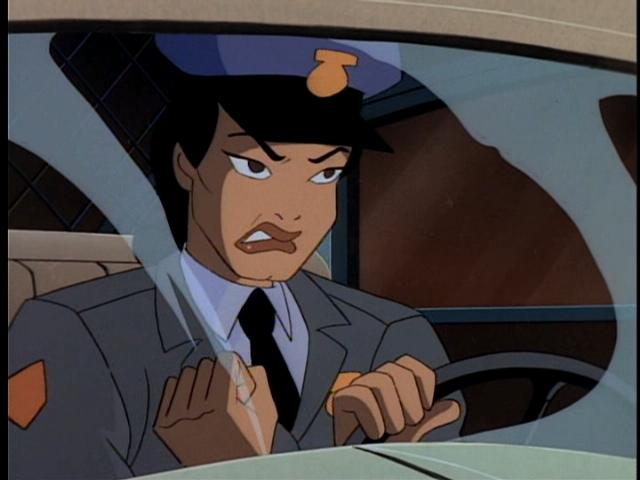
Steven Padnick is a freelance writer and editor. By day. You can find more of his writing and funny pictures at padnick.tumblr.com.










